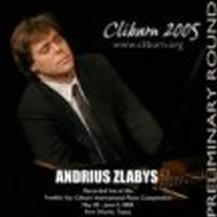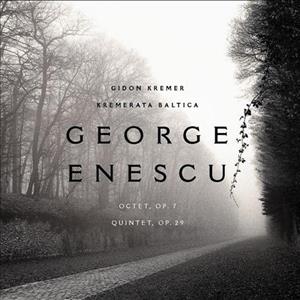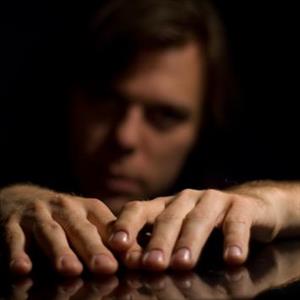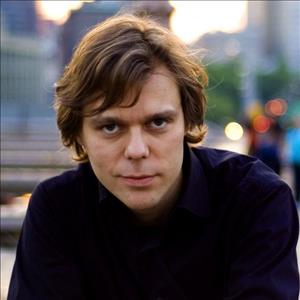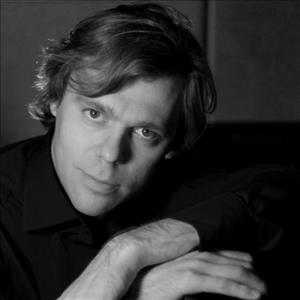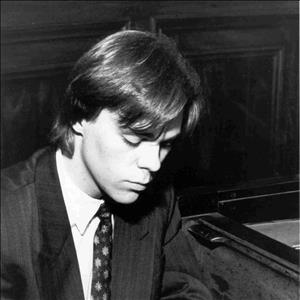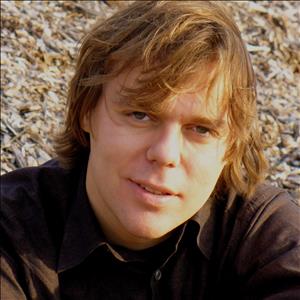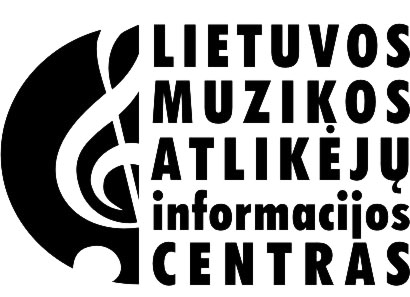
Andrius Žlabys

The Cleveland Plain Dealer pronounced pianist Andrius Zlabys “a virtuoso of fabulous technique and romantic temperament who performed like an authentic heir to the grand masters of 19th-century keyboard tradition.” A winner of Astral Artistic Services’ year 2000 National Auditions, Astral presented him in recital performing the entire Book I of Bach’s Well-Tempered Clavier, a performance The Philadelphia Inquirer claimed “rippled off his hands with such open-hearted rightness that you couldn’t escape the notion that the pianist was acting as Bach’s ventriloquist.” Zlabys has appeared throughout the world as a soloist, recitalist, and chamber musician. A prizewinner at the 2003 Cleveland International Piano Competition, he has appeared as soloist with the New York Philharmonic, the Boston Symphony, and the Cleveland Orchestra.
Andrius Zlabys made his Carnegie Hall debut with the New York Youth Symphony Orchestra in 2001. He has also performed in Carnegie’s Zankel Hall, and has made his Concertgebouw debut in Amsterdam. He was featured at the 2004 Menuhin and Salzburg festivals, and has participated in Austria’s Lockenhaus Music Festival (in 2001, 2002, and 2004), and at Germany’s Kronberg Academy, where he performed with Yuri Bashmet.
In collaboration with renowned violinist Gidon Kremer, Andrius Zlabys recorded the Enescu Quintet for the Nonesuch label; the recording was nominated for a 2003 Grammy Award. Last season Andrius Zlabys performed extensively with Mr. Kremer, including recitals in Japan, China, Europe, and South America. He also appeared with the ensemble in a concert under Astral’s auspices, marking the legendary violinist’s first appearance in Philadelphia in over a decade. Andrius Zlabys has also accompanied Mr. Kremer on recent recital tours. In 1998 Andrius Zlabys toured in recital with violinist Hilary Hahn.
Andrius Zlabys began piano studies at the age of six in his native Lithuania and studied with Laimute Jakniuniene at the Ciurlionis Art School for eleven years. Upon graduation from Ciurlionis at sixteen, he spent a year at the Interlochen Arts Academy where he studied piano with Victoria Mushkatkol and composition with Joseph DeFazio. He graduated from the Curtis Institute of Music in the year 2000, where he studied with Seymour Lipkin. In 2005 he received an Artist Diploma from the Cleveland Institute of Music, where he studied with Sergei Babayan. He makes his debut with the Rotterdam Philharmonic in the spring of 2007.
Giya Kancheli, Three Pieces from Songbook
Live from concert at Le Poisson Rouge, New York
J. S. Bach English suite No. 5 in e minor
J.S.Bach Concerto No. 1 in D minor for keyboard and orchestra
Sergei Krylov, conductor
Andrius Žlabys: Passacaglia
Andrius Zlabys and Joshua Roman performing Zlabys' piece "Passacaglia" at Town Hall Seattle on April 22, 2014
The offstage, amplified piano is sparingly used, initially bursting with untamed spleen, at least in the excellent fingers of pianist Andrius Zlabys
Bruce Hodges, Seen and Heard International Concert Review
Cleveland Institute of Music artist-in-residence Sergei Babayan recommended Zlabys, who is pursuing a master's degree at the institute. The 25-year-old pianist was ready for the challenge. A virtuoso of fabulous technique and romantic temperament, he performed like an authentic heir to the grand masters of 19th-century keyboard tradition. His program consisted of a Bach partita, two Beethoven sonatas and Cesar Franck's Prelude, Choral and Fugue. Discarding all notions of historic performance practice, he lavished works from the Baroque, classical and Romantic eras with rich tone, clean articulation, expressive dynamics, a variety of eloquent touches and generous use of the sustaining pedal. A compelling presence at the piano, Zlabys demonstrated the validity of his approach in the opening work, Bach's Partita No. 6 in E minor. He played the toccata with clarity, excitement and a sense of mystery. He gave some of the Baroque dances a jazz beat. He built up the fugal finale with surging momentum. His interpretation emerged as a persuasive rethinking of Bach for the modern piano. The pianist also put his personal stamp on Beethoven. In Sonata in E major, Op. 109, he shaped a spell-binding interpretation that capitalized on the work's dramatic contrasts. Harnessing his speed, energy and power, he kept the large-scale structure under control. Spinning out the theme of the finale, he let the melody sing, then allowed the variations to flow in cascades of gorgeous sonorities. Probing into the angst of Beethoven's Sonata in D minor, Op. 31, No. 2, he gave meaning to the work's subtitle, "Tempest." The stormy mood of the opening movement gave way to the introspective tension and release of the adagio. The finale thundered with electrifying intensity. At this point, a little lightness would have been welcome. But Zlabys stuck with his preference for the monumental. His performance of Franck's Prelude, Choral and Fugue ebbed and flowed on chromatic harmonies, melting chords and majestic counterpoint. The piano rumbled like a mighty pipe organ. The music sounded triumphant. The audience, though smaller than expected because of the change in pianists, cheered and whistled its approval for Zlabys' heroic performance. For an encore, he played a slam-bang showpiece from Rachmaninoff's Etudes-Tableaux.
Young pianist gives triumphant performance, Wilma Salisbury, Plain Dealer Music Critic, 02 07 03
After a brief pause, the trio moved into Shostakovitch’s Piano Trio No. 1, written when he was 17. It’s a cheeky work full of hyper-Romantic passages alternating with hints of the grotesqueries and sarcasms that fill his later pieces. His Piano Sonata No. 1, written three years later, was performed by Andrius Zlabys after intermission. Here, Shostakovich revels in virtuosity, which Zlabys made the most of. His huge tone and fast-fingered reflexes veered from the percussive hammerings of many of the sonata’s sections to the spare, understated delineation of the Adagio that makes up almost half of the work’s 14 minutes. Alfred Schnittke’s Violin Sonata No. 2, “Quasi una sonata” closed the first half of the concert, a polystylistic piece that explores the tension between the tonal and the atonal. As a ruthless piano crushes and overwhelms the solo violin’s efforts to sing beautiful melodies, it’s impossible not to see the political subtext in this work by Russia’s leading post-Shostakovich composer. The performances were everything that could be desired. Zlabys’ pianism in the Piano Sonata and the Schnittke was superb; one longs to hear him in a solo recital.
Dan Davis
Valentin Silvestrov grew up in Kiev (where my maternal grandmother was born), and his first composition, a 1961 Piano Quintet, was daring and atonal for the Soviet Republic at that time. Andrius Zlabys, on piano, was passionate and supportive of the softness of this work. The Shostakovich Piano Trio No. 1 in C Minor allowed for alternating and evocative cello and violin leads, as the theme evolved in a sorrowful but comforting series of solos and combinations of strings and piano. A lovely moment was the single sound of the piano, cello, and violin in unison, and the tempo alternated from elongated to energized. Schnittke's Violin Sonata No. 2, "Quasi una Sonata" was dynamic and full of surprises. Schnittke is considered the leading Russian composer of the post-Shostakovich era. He was only allowed to premiere his works in out of the way venues so as not to "disturb" the conservative Soviet culture. (Carnegie Notes). This piece began with tiny crashing piano chords followed by similar violin responses and passages of silence. There were over-the-edge screeching, almost visceral notes, piercing and poignant, and it takes an ardent fan of this contemporary genre to enjoy such a work. The most fascinating point was a musical conversation between piano and violin, and Mr. Kremer and Mr. Zlabys developed a fanatical and ferocious conversation of sorts. Shostakovich's Piano Sonata No. 1 in D Major was driven and demanding. I was in awe of Mr. Zlabys' compelling solo performance, and it was during this piece that I became aware of the high quality of the Zankel Hall acoustics, which compare quite favorably with the famed acoustics of Stern Hall. This Sonata includes extreme variations in volume and mood with repetitions and powerful crescendos that conclude in a display of percussive piano fireworks.
Dr. Roberta E. Zlokower, January 25, 2004
...the rapport between (violinist Gidon Kremer and Zlabys) was extraordinary, and Zlabys almost stole the show with a commanding performance of Shostakovich's First Piano Sonata. His easy virtuosity is a wonder.
The Strad
...contenplative and mesmerizing...
The Los Angeles Times
A virtuoso of fabulous technique and romantic temperament, [Zlabys] performed like an authentic heir to the grand masters of 19th-century keyboard tradition... he lavished works from the Baroque, classical and Romantic eras with rich tone, clean articulation, expressive dynamics, a variety of eloquent touches... A compelling presence at the piano...
The Plain Dealer (Cleveland)
Andrius Zlabys... though unknown to the public at large, may be one of the most gifted young keyboard artists to emerge in this country in years...
Chicago Tribune
The beloved C-major chord arpeggios that begin the "Well-Tempered Clavier Book I" rippled off of Zlabys' hands with such open-hearted rightness that you couldn't escape the notion that the pianist was acting as Bach's ventriloquist...
The Philadelphia Inquirer
[Zlabys] delivers... ar the keyboard with unflinching clarity... Bracing and exhilarating his playing is the work of a major talent... I wondered if I'd ever be able to enjoy [other] reading [of Franck's Prelude, Chorale, and Fugue] again... Zlabys' pianistic sound is generous and all-encompassing.
The Philadelphia Inquirer
Zlabys offered a brilliantly touching performance.
